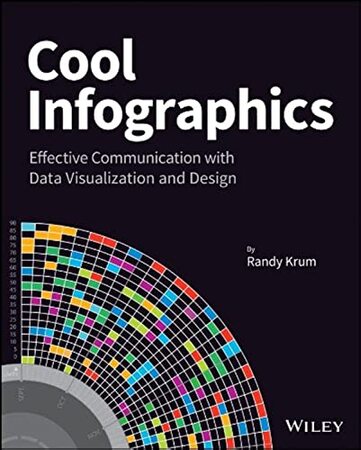
Cool Infographics
The Power of Infographics in Visual Communication
“Cool Infographics: Effective Communication with Data Visualization and Design” by Randy Krum is a comprehensive guide that explores the power of infographics as a visual communication tool. In this book, Krum takes readers on a journey through the world of infographics, showcasing their effectiveness in conveying complex information, engaging audiences, and telling compelling stories.
The book begins by introducing the concept of infographics and their evolution in the digital age. Krum highlights the importance of visual storytelling and how infographics can transform overwhelming data into digestible and visually appealing narratives. He emphasizes that infographics go beyond mere data representation and have the ability to evoke emotions and make information more memorable.
Principles and Techniques of Effective Infographic Design
Krum delves into the key principles of effective infographic design, emphasizing the need for clarity, simplicity, and relevance. He discusses the importance of understanding the target audience, defining clear objectives, and choosing the appropriate data visualization techniques to convey the intended message. Krum provides valuable insights into the visual hierarchy, color schemes, typography, and layout techniques that contribute to impactful and visually stunning infographics.
Types of Infographics and Real-Life Examples
The book explores various types of infographics, including statistical infographics, informational infographics, timeline infographics, and comparison infographics. Krum examines real-life examples from different industries and showcases the diverse ways in which infographics can be used to communicate information effectively. He dissects the design elements of each example, pointing out the strengths and highlighting the key takeaways for readers.
From Data to Storytelling: Creating Compelling Infographics
Krum goes beyond the design aspect of infographics and delves into the process of data gathering, analysis, and storytelling. He provides guidance on finding reliable sources, conducting thorough research, and extracting meaningful insights from data. Krum emphasizes the importance of data accuracy and integrity in creating credible infographics and offers tips on avoiding common pitfalls and biases.
The book also addresses the role of technology in creating and sharing infographics. Krum explores various tools and software that facilitate infographic creation, highlighting their features, pros, and cons. He provides practical advice on selecting the right tools based on individual needs and skill levels.
Krum dedicates a significant portion of the book to the distribution and promotion of infographics. He discusses strategies for maximizing the reach and impact of infographics through social media platforms, websites, blogs, and online communities. Krum emphasizes the importance of optimizing infographics for search engines and shares tips on increasing visibility and driving engagement.
Throughout the book, Krum emphasizes the importance of storytelling in infographics. He provides guidance on crafting compelling narratives, structuring information in a logical sequence, and creating a visual flow that guides readers through the infographic. Krum shares techniques for using headlines, captions, annotations, and call-to-action elements to enhance the storytelling aspect and engage the audience.
The Future of Infographics and Evolving Trends in Data Visualization
The book concludes with a section on the future of infographics and the evolving landscape of data visualization. Krum explores emerging trends, such as interactive infographics, virtual reality, and augmented reality, and discusses their potential impact on communication and storytelling. He encourages readers to embrace innovation and adapt to new technologies to stay ahead in the field of infographics.
In summary, “Cool Infographics” is a comprehensive and insightful guide that equips readers with the knowledge and tools to create effective and visually appealing infographics. Randy Krum’s expertise shines through as he navigates through the principles, techniques, and best practices of infographic design. Whether readers are beginners looking to explore the world of infographics or seasoned professionals seeking to refine their skills, this book provides a valuable resource to enhance their ability to communicate with data visualization and design.












